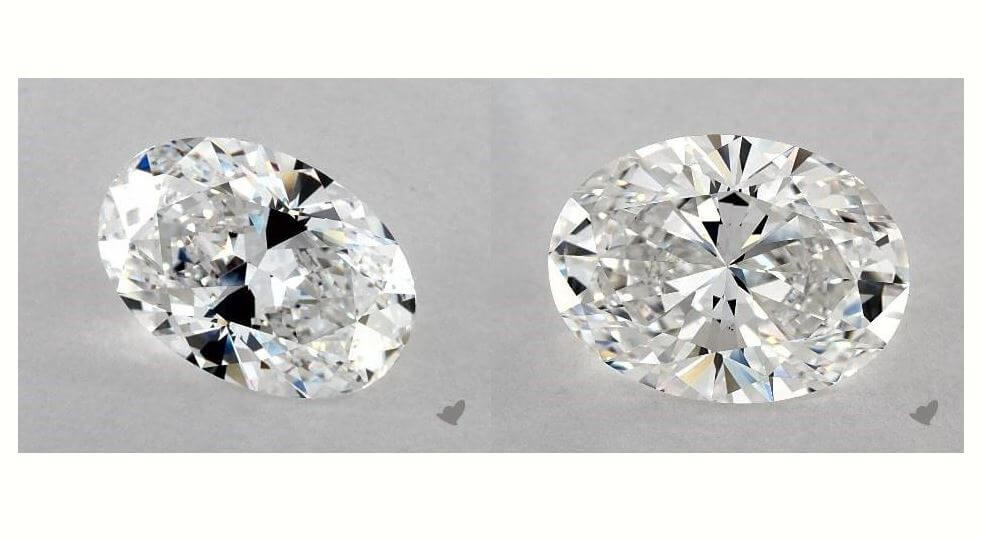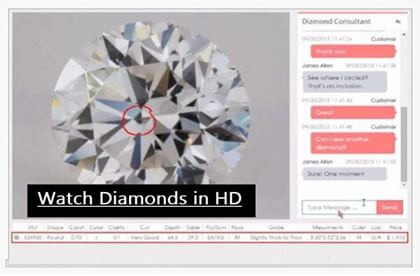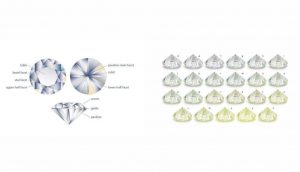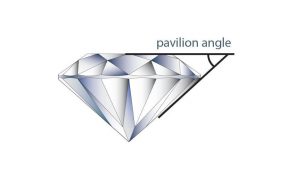Most of the time when a buyer is going to purchase a diamond, they look through the diamond certificate for the cut grade, color grade, clarity grade and carat weight (basically the 4Cs). But beyond the 4Cs of diamonds, there are other things to look out for or watch out for (as the case is) and one of them is the bow-tie effect.
What Is The Bowtie?
The bowtie effect in diamonds, also known as the butterfly effect, is a dark shadow that is cast across the center of a diamond in the shape of a bow tie (where it got the name). The bowtie effect occurs in diamonds when light shining on the facets of the diamond is not properly reflected back by the diamond. It is the most common infancy diamond cuts like the pear, marquise, heart, princess and oval cuts. The round cut is one diamond cut that does not experience the bow-tie effect. This is because the light is distributed equally in this diamond because of its symmetry, unlike the aforementioned cuts where light is not evenly distributed, giving room for a shadow to form across the center of the diamond. Very much like a bowtie, the shadow (dark area) thins out towards the center of the diamond. This is because of the depth at the center of the diamond, so the shadow is wider at the sides or edges.
Visibility of Bowtie
A large percentage of diamonds in the market are affected by the bow-tie effect. But like inclusions in diamonds, the bow tie is more noticeable in some diamonds than in others. The visibility of this effect in diamonds ranges from nearly invisible to very strong. So while you might not see it at all in some diamonds, it is the first thing you notice in some others. Many professional gemologists have argued for and against how much negative effect it has on a diamond. But it is impossible to ignore the fact that a strong bowtie affects the shine and natural beauty of a diamond.
When shopping for a diamond, it is important to visually inspect the stone before making the purchase. Assess the diamond from different distances (short and long) and angles, to be sure of how much the brilliance and sparkle of the diamond are affected. It is not enough to check the diamond certificate alone. You might otherwise end up buying an expensive diamond with a very visible bowtie. In a situation where you are unable to see the diamond physically, you can ask the jeweler for pictures of the diamond. Make sure that the pictures are of very high resolution. You can ask for a video if possible, for you to have a thorough view of the diamond.
Can It Be Treated?
Once the diamond has been completely cut and there is a bowtie in it, it will be impossible to rectify it. It is possible to rectify a bow-tie effect in a diamond while it is still being cut. It is however not an easy process and can only be carried out when the cutting process is ending. Unlike the other treatments or correctional processes like the clarity enhancement process and the HPHT color enhancement process, the bowtie correction process is a very complicated process. It takes a highly skilled diamond cutter to reduce or completely remove the bow-tie effect in a diamond and still maintain a high cut grade for the diamond. There are many angles involved in this process. So for the cutter, it is more than just cutting out the bow-tie effect. There is also a big risk involved in carrying out this process. If the cutter makes a mistake during this process, it may destroy the diamond in many ways. In a bid to make the diamond more beautiful, it might end up being duller. It, therefore, becomes more difficult to sell the diamond than it was with the bowtie. The diamond value reduces and it becomes more expensive to treat the bowtie than sell the diamond with it.
Importance of the Cut
The most important characteristic of the diamond is the diamond’s cut and the degree of bowtie effect in a diamond is closely linked to the diamond’s cut. Many people believe that the reason why diamonds have bowtie is due to a poor cut grade of the diamond. But this is not exactly accurate. So it is rather more accurate to say that the bowtie in a diamond is worsened if the diamond has a poor cut but if the diamond has an excellent cut, it could enhance the diamond and reduce the effect of the bowtie.
The bowtie effect is inevitable in many diamond cuts and trying to avoid it while cutting the diamond might lead to a poorly cut diamond. So a skilled diamond cutter will cut a diamond with the bow tie in such a way that allows light to diffuse better throughout the stone and this will minimize the bow tie in the diamond.
Should You Purchase A Diamond With Bowtie?
There are different degrees of bowtie in diamonds. The more visible the bowtie is in the diamond, the lesser the light the diamond produces. This means that the diamond’s brilliance is affected by the bowtie. It is not advisable to purchase diamonds like these. If the bowtie in the diamond is minimal however, the diamond can still appear attractive. Minimal bowtie in diamond is not easily noticed and they do not affect the diamond’s overall brilliance. Buying diamonds like these is one way to minimize cost. The value of a diamond reduces with the presence of bowtie depending on its severity. So if you are working with a tight budget and are looking to buy a diamond on a cheap, you can go for one with a minimal bowtie. You only need to ensure that the bowtie does not affect the diamond’s brilliance and it is not easily noticed from a distance. There are particular settings that blend well with a diamond’s bowtie, as long as minimal.
Overall, it is not a bad idea to buy a diamond with a bowtie, just ensure you are not being coerced into purchasing a bad diamond by an unethical jeweler looking to offload the diamond. When it comes to buying a diamond with bowtie, the keyword is “minimal”.
Executive Summary
The bowtie effect is a phenomenon common in infancy diamond cuts. It is formed when the facets of a diamond do not properly reflect light back and the light is not evenly distributed in the diamond. This causes a dark shadow to be cast across the center of the diamond in the shape of a bow tie (thin at the middle and wider at the edges).
The bowtie is a very common effect and it affects most of the diamonds in the market today. The difference in these diamonds is the level of visibility of the bowtie effect they suffer from. In some diamonds, the bowtie effect is almost invisible while in some others it is very strong.
Rectifying a bowtie effect in a diamond can only be done when the diamond is still being cut. Once the diamond is completely cut with it, it becomes impossible to rectify it. The process of correcting bowtie is, however, a very complicated and risky process and requires a very skilled cutter to carry it out successfully. If there’s a mistake, the diamond will be worse and less valuable than it would have been with the bowtie, so the risk is always something to weigh.
The bowtie in diamonds affects the overall brilliance of the diamond. The stronger the bowtie, the less fire the diamond produces and the lower the value of the diamond. But a minimal bowtie doesn’t really affect the diamond’s brilliance. So if you are buying a diamond with bowtie, ensure that the bowtie is minimal. Bowtie in diamond always reduces the value of the diamond, so if you have a strict budget, you might want to consider buying a diamond with a bowtie. You only have to ensure it is minimal and does not affect the diamond’s overall beauty.




